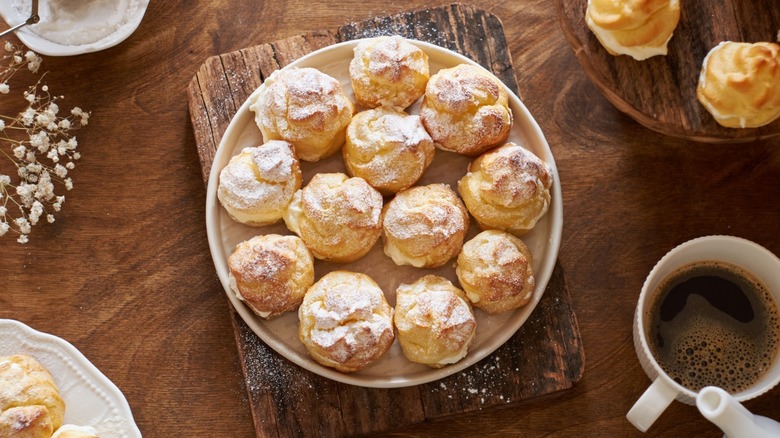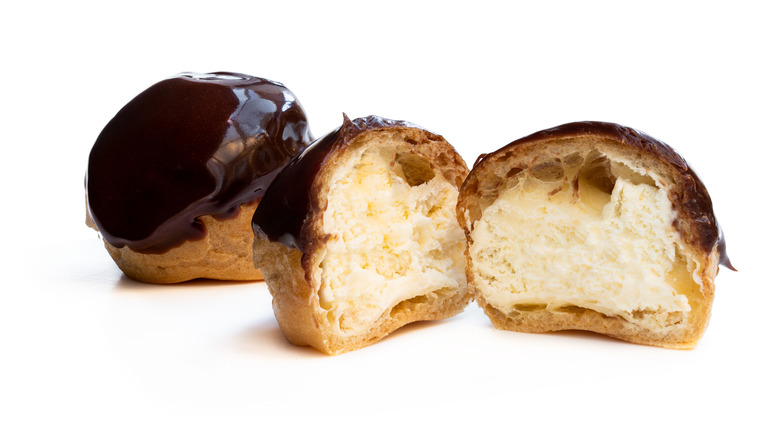The History Of The Cream Puff Is Shrouded In Myth And Mystery
Light, flaky, and delicious cream puff pastries have been around for a very long time, but the circumstances surrounding their origin are still shrouded in mystery. According to The Good Life France, celebrated French chef Antonin Carême was the first to add cream to the puffs in the early 19th century. He also favored garnishing them with caramel and was the first to build the cream puff towers known as croquembouches that are still popular at special events.
But Carême is not the most famous person associated with the history of cream puffs. That would be Catherine de' Medici, daughter of famed Renaissance patron Lorenzo de' Medici. Catherine would later become the queen of France following her marriage to Henry, Duke of Orleans (later King Henry II), notes The Florentine. Given the intrigue of the time and the strong Medici influence, it should come as no surprise that the marriage was brokered by another member of the family: Giulio de' Medici — although, at that time, he was better known as Pope Clement VII.
The soon-to-be Queen Catherine brought a large entourage to France's royal court when she arrived in the 1530s, per Choureal, including a number of her favorite Florentine chefs. One of them is often credited with inventing the cream puff.
Italian chef may be the inventor of cream puffs
One of Queen Catherine's chefs, the Italian-born baker Pantanelli, is credited by some with inventing the cream puff, according to Paris Unlocked. However, he definitely wasn't the first to make a puff pastry. As Love to Know notes, cheese-stuffed puff pastries were made in France and Germany in the 13th century, nearly 300 years before Catherine and her chefs arrived at the royal court.
Much of the confusion — and the attendant myth and mystery — undoubtedly stems from the many names by which cream puffs are known. The term profiterole, a synonym for cream puffs, dates to at least 1600, observes Choureal. The designation choux pastry, meanwhile, originated in the 17th century, explains Love to Know, because the shape of these pastries resembled a cabbage. Pâte à choux is yet another name for the same type of pastry, per Paris Unlocked.
The true evolution of pastry is largely lost to history. Still, Pantanelli and Câreme, who added the namesake cream filling, certainly deserve credit for elevating cream puffs to the level of culinary art. Perhaps the most likely explanation for the invention of cream puffs, per Paris Unlocked, is that they developed naturally from one of the many European baking traditions, and Pantanelli was simply the first to be acclaimed for making them.

